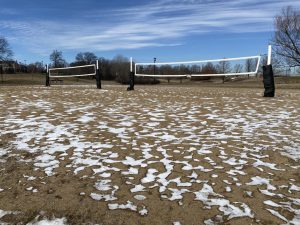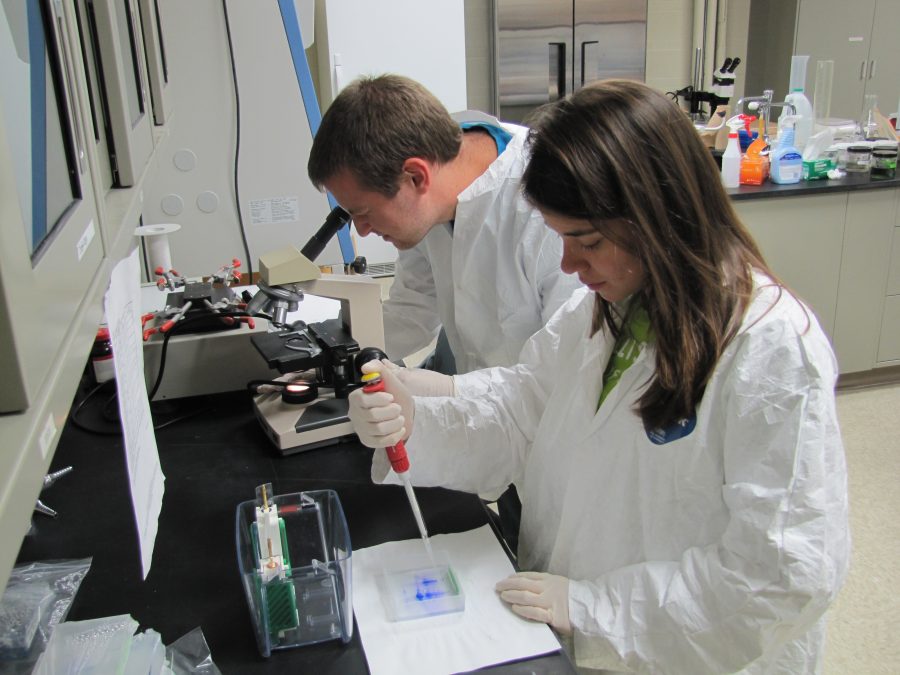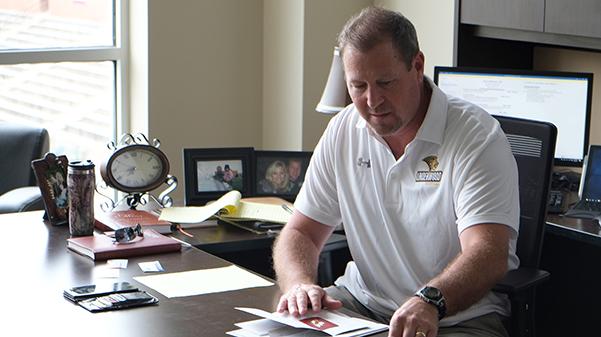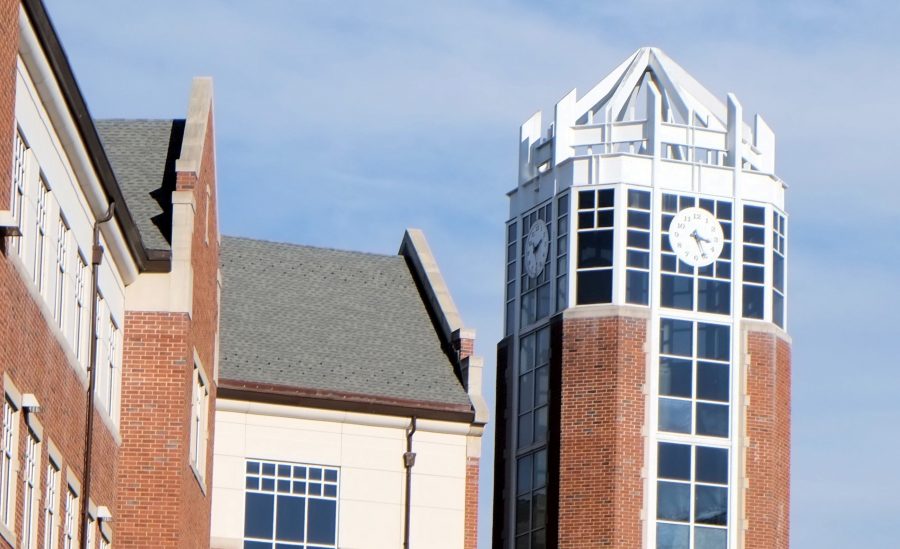By Gustav Gropp | Lindenlink World News Editor

Daniel K. Evans (left) and Valentina E. Baena (right) work on their project. They are both seniors majoring in Biology.
The rebuilding of the human body has always fascinated mankind. The idea of living extraordinarily long and reconstructing our bodies has inspired much of the media we see today. Two scientists may have become mankind’s latest heroes.
On Monday, Oct. 5, The Nobel Prize in Physiology or Medicine was awarded to Dr. John B. Gurdon of the University of Cambridge, England, and Dr. Shinya Yamanaka of Kyoto University in Japan for their independent research that took place almost 50 years apart. The two scientists are widely considered to have laid the groundwork for regenerative medicine. Their work focuses mainly on rebuilding the body with tissues generated from its own cells.

Dr. Gurdon.
This revolutionary research has helped scientists understand that cells which have matured into a specialized state, can be reversed to their immature state. This allows the cells to be re-programmed to take on different forms.
In an interview with Lindenlink, Lindenwood professor of biology Dr. Rao Ayyagari explained that stem cell research has always been met with ethical problems because of the use of human embryos. But the idea behind the research is aimed at reconstructing the body from its own mature cells.
“Cells which you and I would have, are already destined, or they have been given a function. . .a long time ago back in the embryo,” Ayyagari said.

Dr. Yamanaka.
These cells that have already been given a function are known as mature cells. Stem cell research is based on reversing the designated functions in such a way, that the cell once again becomes immature – ready for re-allocation to any function.
In the days following conception, the embryo is made up of these immature cells that develop into the different cells that make up the adult organism. Cells in this immature state are called pluripotent stem cells.
Until the research conducted by Gurdon and Yamanaka, it was believed that specialized cells had lost the ability to return to their immature state. Gurdon managed to change that by successfully cloning frogs back in 1962. Gurdon’s experiments required him to remove the cell nuclei and inject it into another cell.
Yamanaka is hailed for his contribution because he was able to answer Gurdon’s question of whether an intact adult cell could be turned back into its immature state. His work with the reversal of adult cells eliminates the need for human embryonic cells, therefore curbing ethical issues.
Yamanaka’s breakthrough is especially important to the scientific community because scientists now know what proteins need to be used to return adult cells back into their immature, stem cell state. Hopes of regenerating tissue for reconstructive rehabilitation are now closer than ever before.














